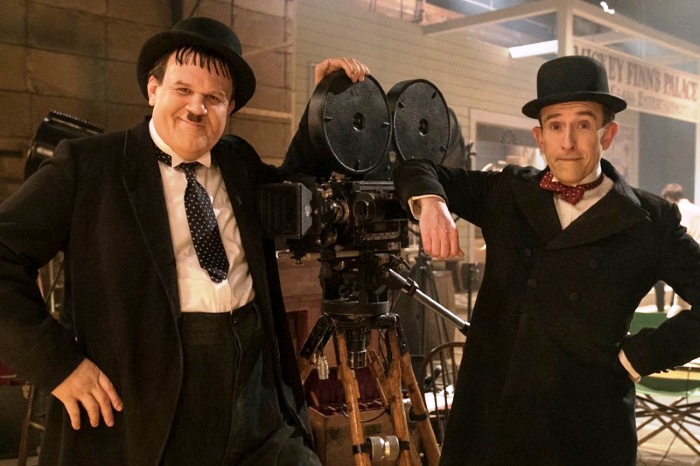The movie showcases the famed comedy duo at the twilight of their illustrious careers

The lithe Stan Laurel had yet again gotten his portly partner Oliver Hardy involved in “another nice mess,” this time in 1937’s Way Out West. (As any member of the diehard Sons of the Desert fan club will tell you, Another Fine Mess is the 1930 film; the actual catchphrase is often misquoted.) The legendary comedy duo was on top of the world, in the middle of a slew of hit movies, including 1932’s The Music Box, which won the first ever Academy Award for a live action short film. When all was said and done, Laurel and Hardy would appear together in an astonishing 106 films of varying length between 1921 and 1951. The bulk of their output came in the years 1927 to 1938 as they moved from silent shorts to “talkie” shorts to sound features.
Laurel and Hardy, however, didn’t start out their careers as a unit. Born in Lancashire, England, the son of a theater manager and an actress, Laurel began his career on stage as a teenager in Scotland, eventually joining a troupe of British music hall actors that included a young Charlie Chaplin. They toured the United States, but Laurel decided to stay, so he headed to Hollywood and made his film debut in the 1917 silent short Nuts in May.
Oliver Hardy, meanwhile, was born in the small town of Harlem, Georgia, and grew up in the rural south until he went to Atlanta as a teenager to study music and sing. He then went to Jacksonville as a vaudeville performer and ended up appearing in 1914 short made in Florida, Outwitting Dad. Nicknamed “Babe” for his resemblance to a rotund infant, he too lit out for Los Angeles and quickly found work for several studios.
Laurel and Hardy first appeared on-screen together in the 1921 film The Lucky Dog, but not as the comedy team still popular today. (In it, Oliver robs Stan at gunpoint.) Both men had successful individual movie careers going, but they wouldn’t become “Laurel and Hardy” until pioneering film producer and director Hal Roach cast them in the 1927 silent short The Second Hundred Years. Roach recognized how well they paired on-screen—starting with the basic Big Guy-Little Guy visual—and tapped into a style uniquely their own.
Typically, comedy duos have a designated straight man and a funny foil. Laurel was the manchild who drove Hardy up the wall, but in their films, the two swapped roles and didn’t stick to expectations rotten-tooth-and-nail.
“By virtue of comedy team alchemy, the straight man is usually a jerk, or at least always stern. Abbott was mean to Costello; Bert is serious while Ernie gets to goof off,” says Kliph Nesteroff, author of The Comedians: Drunks, Thieves, Scoundrels and the History of American Comedy. “Hardy was the stern one but only long enough to give the camera a really funny look, then he goes back to being sweet. The dynamic between Laurel and Hardy is lovable, and they have a certain charm that no other comics of the era had, I’d say even more so than Charlie Chaplin.”
The arrival of feature-length talkies in 1927 could have meant doom for the duo. According to Nesteroff, peers of Laurel and Hardy, like Buster Keaton, suffered during the industry’s transition from silent films. Keaton, who had a gruff voice, jolted audiences out of their preconceived notions of their favorite screen stars. “Laurel and Hardy successfully straddled the silent-to-talkie film period in a way a lot of their contemporaries didn’t,“ says Nesteroff. “Their essentially charming likable characters remained intact when they first spoke on screen. Their talkies are also much better than their silents, which isn’t the case for Keaton, Charlie Chaplin, or Harold Lloyd.”